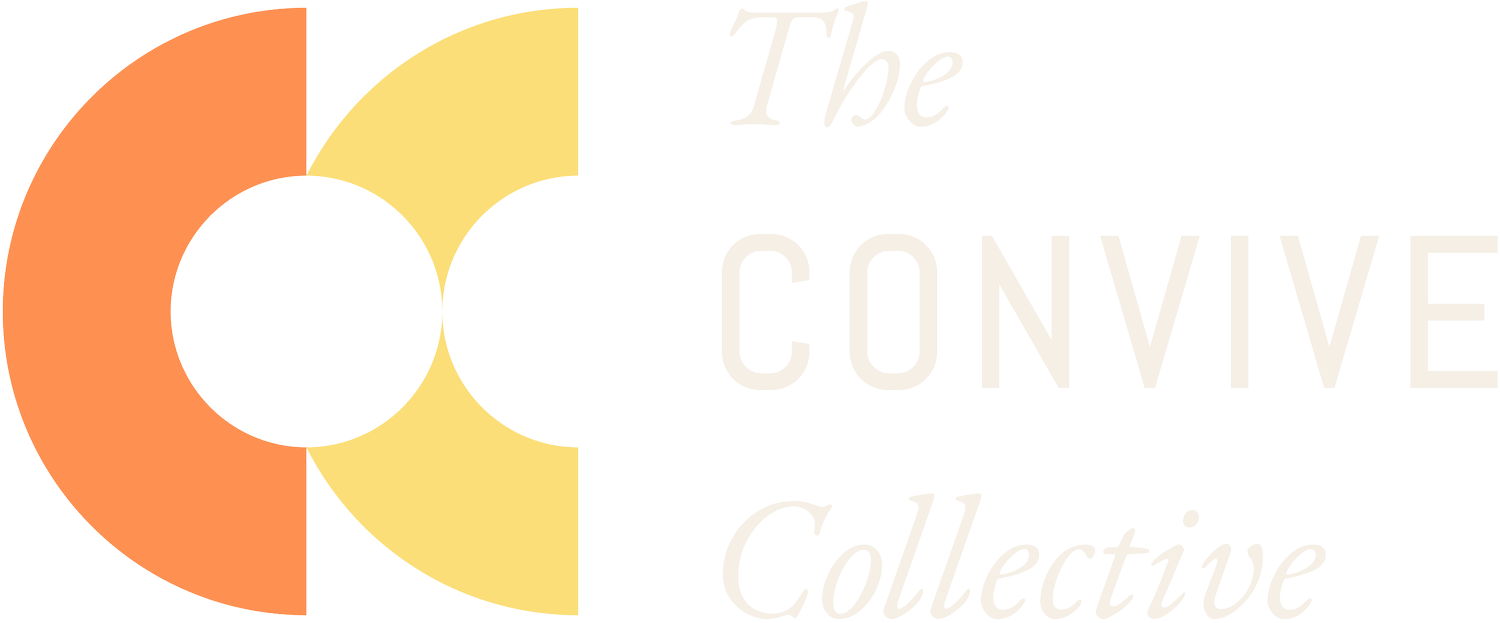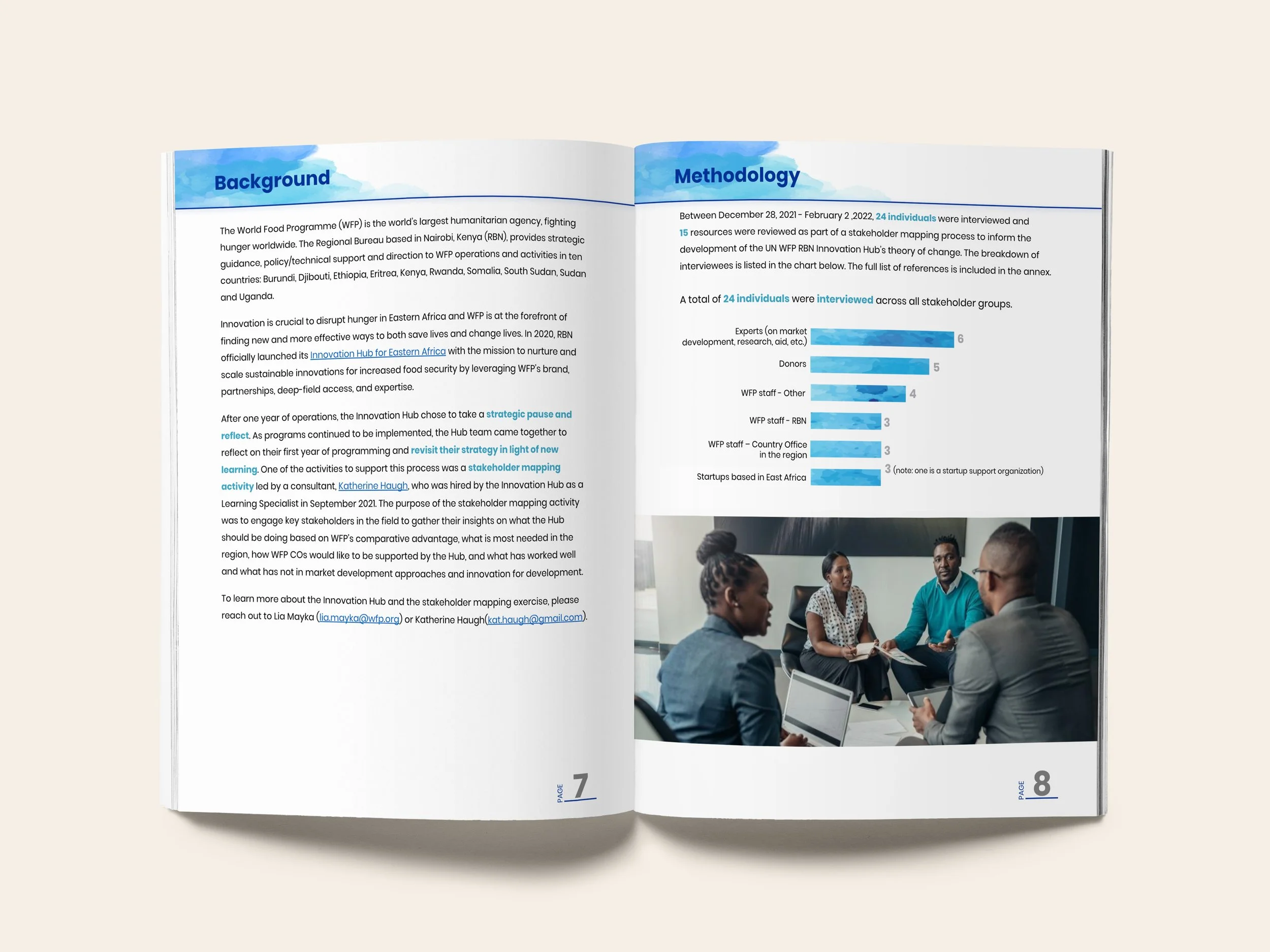Case Study
UN World Food Program
How can we help the United Nations (UN) World Food Programme (WFP) Innovation Hub clearly articulate and measure its strategic mandate?
The Need
The UN WFP Innovation Hub is WFP’s first regional innovation hub set up to achieve climate-resilient inclusive and locally-led sustainable food systems.
WFP is committed to harnessing local solutions to local problems and nurturing the entrepreneurial ecosystem in the region to thrive in service of thriving food systems. With so much to work on across the Eastern African region and so much possibility abound for the power of innovation, the Hub found themselves wondering, “What do we focus on? What does success look like? And how do we know if we are making a difference?”
As the first of its kind, the Hub was chartering new territory, which we applauded them for. At their inception, they needed assistance from a learning and strategy partner to help them clearly articulate their strategic vision, detail how they hoped to get there, and measure their progress along the journey.
That’s where we came in.
What We Did
We worked with WFP to handpick and tailor the perfect collective of Convive experts to accompany them at this important moment of inception and design.
We began by deeply listening and understanding their context, challenges, and goals. From there, we identified priorities and designed the way forward, which included piloting ideas with their team and institutionalizing those that were working.
As a strategy and learning partner, we carried out several theory of change and strategy workshops, as well as stakeholder consultations and landscape mapping to help them decide whether the Hub’s resources and skills were best placed to have impact across the region.
Benefits & Outcomes
We learned that strategy and learning are inherently intertwined: we began with learning about the context the Hub was situated in, what partners and stakeholders shared was needed, and the Hub’s own internal reflections on their own strengths as a systems actor. From there, we worked with the team to clarify their strategy vision and what success would look like from the Hub. It was only then that we could clearly see what needed to be tracked and measured; we could not have gotten to that point without the clarity of mission and vision unlocked in the strategy development process.
-
Through visual facilitation and drawing together, we came to clarity about the Hub’s three key pillars of strategic focus. From Miro boards to in-person workshops, we came up with several different structures to clearly display what we heard the Hub team speaking about. It was through this process that it became clear to us and the Hub exactly what they were trying to achieve, how, with whom, and what success would look like. The pillars would go on to drive hiring decisions, measurement choices, partnerships and resources. We believe that this came about through the use of visual facilitation and visual structures that created a default mental model that continues to guide the Hub’s identity, decision-making and strategy.
-
When we came onboard, the Hub team really wanted to know about what they should be measuring to assess their progress. They wanted indicators, trackers, tools, and surveys. This is something we commonly get asked from clients who share our desire to do their best work in the world. We quickly realized that the Hub needed some additional time clarifying what their strategic goals were first in order to know if they were on track and making progress. Once we had that clarity, the measurement and learning plan we created came swiftly and easily. We then turned that into a learning activity tracker which was integrated into Hub team work planning and timelines.
-
Having a learning mindset and behavior is a very personal practice. But when you work in a team, how you think, speak, and act influences others. And that definitely goes for learning. We saw first hand how individuals on the Hub team embodying learning behaviors and practices shifted the entire team’s strategy, focus, and culture. And it didn’t stop there. We experienced through workshops we designed and facilitated together with different innovation teams across the region how having a collective and collaborative learning practice is just infectious. Lastly, we know from conversations with colleagues at the Hub and in the region that many of the learning practices we worked to establish at the Hub’s inception are still very much intact. We are proud of the work we did together to create a thriving learning culture and environment that plants the seeds (literally) for thriving food systems in Eastern Africa.
Related Case Studies
Explore more of our work with similar organizations.


















